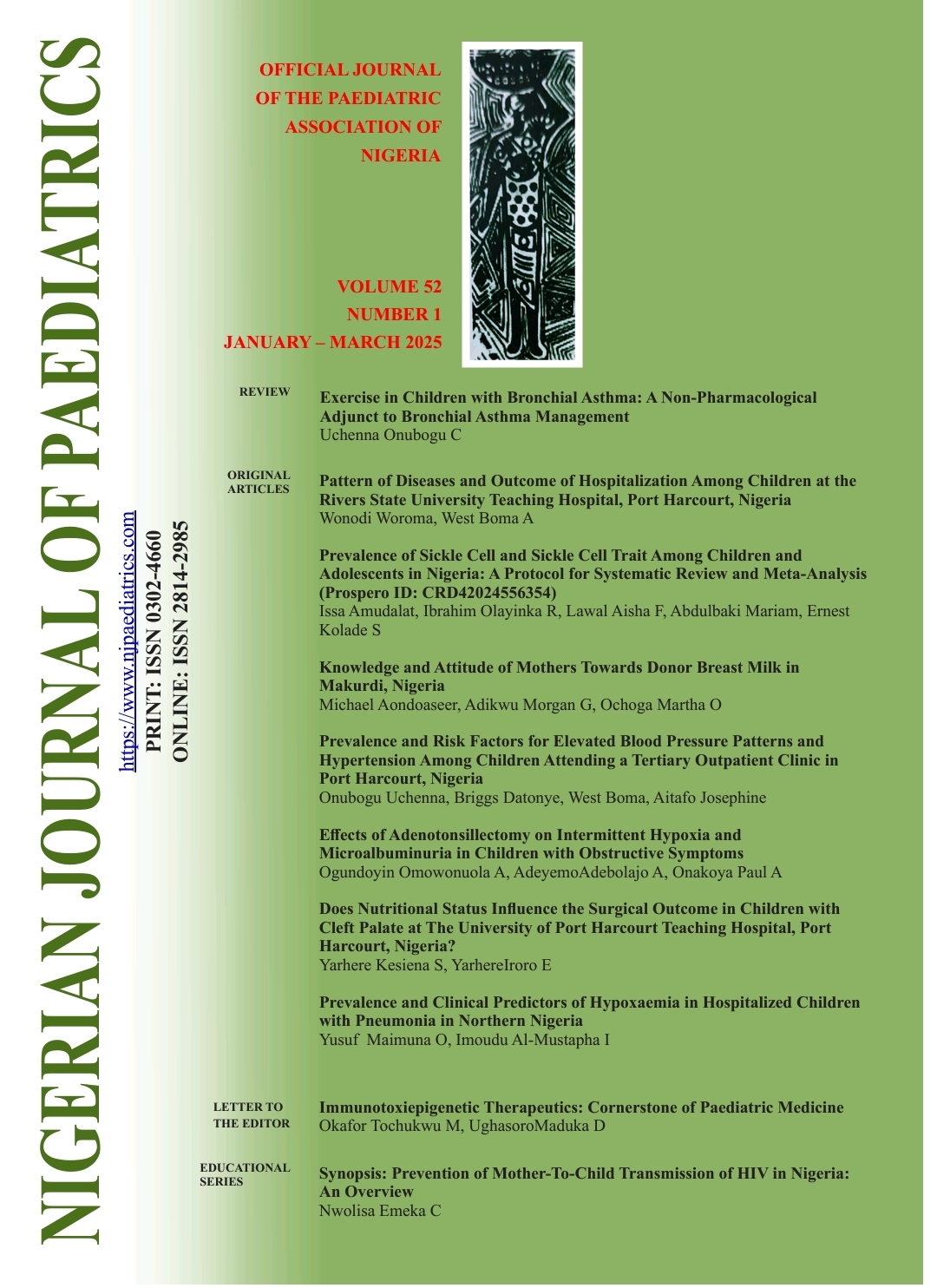Does Nutritional Status Influence the Surgical Outcome in Children with Cleft Palate at The University of Port Harcourt Teaching Hospital, Port Harcourt, Nigeria?
DOI:
https://doi.org/10.63270/njp.2025.v52.i1.2000007Keywords:
Cleft palate, Fistula formation, Nutritional status, Surgical outcome, UPTHAbstract
Background: Cleft palate, a congenital deformity affecting the roof of the mouth, poses challenges in feeding, speech, and overall health. Surgical intervention is often required, but several factors, including nutritional status, may influence the success of the surgery.
Objective: To evaluate the relationship between the nutritional status and cleft palate surgery outcomes at the University of Port Harcourt Teaching Hospital.
Methods: This retrospective study reviewed medical records of 82 children with cleft palate who had surgical repair between 2018 and 2020. Their nutritional status was assessed using the weight-for-age (W/A) and height-for-age (H/A) SDS, calculated with the NiGrowth application (www.nigrowth.com). Clinical parameters were recorded, including cleft classification, cleft dimensions (width and length), and postoperative outcomes like fistula formation.
Results: The study showed that 19.41% of children were underweight, and 40.2% were stunted before surgery. There were 24 cases (29.3%) of fistula formation, with 4 (4.9%) in underweight patients and 9 (11%) in stunted patients. Significant correlations were observed between weight SDS, height SDS and cleft length (r = 0.375, p = 0.029), (r = 0.405, p = 0.018) respectively.
Conclusion: Nutritional status (W/A and H/A SDS) significantly impacts cleft length but does not influence the occurrence of fistula formation post-surgery. The moderate correlation between nutritional status and cleft dimensions highlights the need for a holistic approach to patient management.
Downloads
Published
Data Availability Statement
The data used for this study are readily available without the names identifying the subjects, and will be provided should there be request by the editors, or reviewers.
Issue
Section
License
Copyright (c) 2025 NIGERIAN JOURNAL OF PAEDIATRICS

This work is licensed under a Creative Commons Attribution 4.0 International License.
This is an open-access journal, and articles are distributed under the terms of the Creative Commons Attribution 4.0 License, which allows others to remix, transform, and build upon the work even, commercially, as long as appropriate credit is given to the author, and the new creations are licensed under identical terms

